- MON-SAT: 10AM - 5PM | SUN: 11AM - 4PM
- 1349-1353 High St, Malvern, VIC 3144
- (03) 9041 9995 | AH: 0412378798
- [email protected]
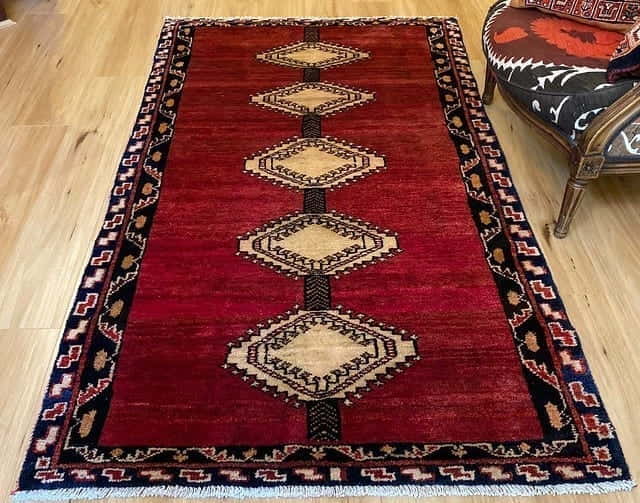
The history of Persian rugs are hailed as the finest and most exquisite rugs in the world for their craftsmanship, elaborate designs, and remarkable weaves. Hand-woven carpets and rugs are a staple to the Iranian economy, and to this day, there are millions of rugs produced annually that generate a significant amount of the country’s income.
Table of Contents
ToggleWhile the carpet weaving industry began as a minor yet productive market, it has expanded to incorporate a number of unique weaves and patterns that make Persian rugs some of the most outstanding in the world.
Persian traditional rugs also known as Iranian rugs have been a sign of prestige and beauty for centuries, with an illustrious history that dates back to 2,500 years ago, when they were first developed by Persian nomads as a tool of necessity to guard against the cold and damp floor.
The art of carpet weaving in Iran had progressed well beyond simple rugs designed for practical purposes. However, historical records reveal that the court of Cyrus the Great, which established the Persian Empire over 2,500 years ago, was decorated with magnificent carpets.
But over time, rug weaving grew into so much more than just a practical solution – it became an art form in its own right. It is this appreciation that has allowed Persian carpet making to be perfected over many generations, with each iteration introducing new patterns and techniques that make these works of art even more visually captivating.
Each magnificent carpet design is a unique representation of the Iranian culture it was made within, possessing a character that could never be replicated. As time progresses, the artistry behind these carpets continues to grow more complex and vibrant; truly a testament to the skilled Iranian craftspeople who continue to keep this beloved tradition alive today.
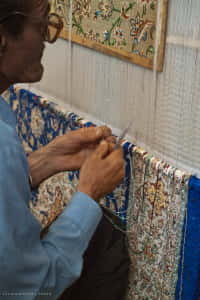
The earliest known Persian rug dates back to circa 500 B.C. The Pazyryk carpet was unearthed in the year 1949 from the grave of a chieftain, and archeological findings indicate that the gravesite had been closed for centuries. Since the rug was preserved in ice, the remnants give observers a startling glimpse into the intricacy of Persian rugs woven 2500 years ago.
Since other carpets and textiles created during this time period were not preserved in this manner, it is often difficult for archaeologists to make an accurate prediction of the date of their origin. The first known documentation of Persian rugs is found in a number of Chinese texts from the Sassanid period (circa 200 – 600 B.C.)
Historical accounts also indicate that the court and palace of Cyrus the Great was decorated with a number of elaborate carpets and rugs. Since these rugs were so well woven with beautiful fabrics and designs, it illustrates the importance and evolution of Persian rugs.
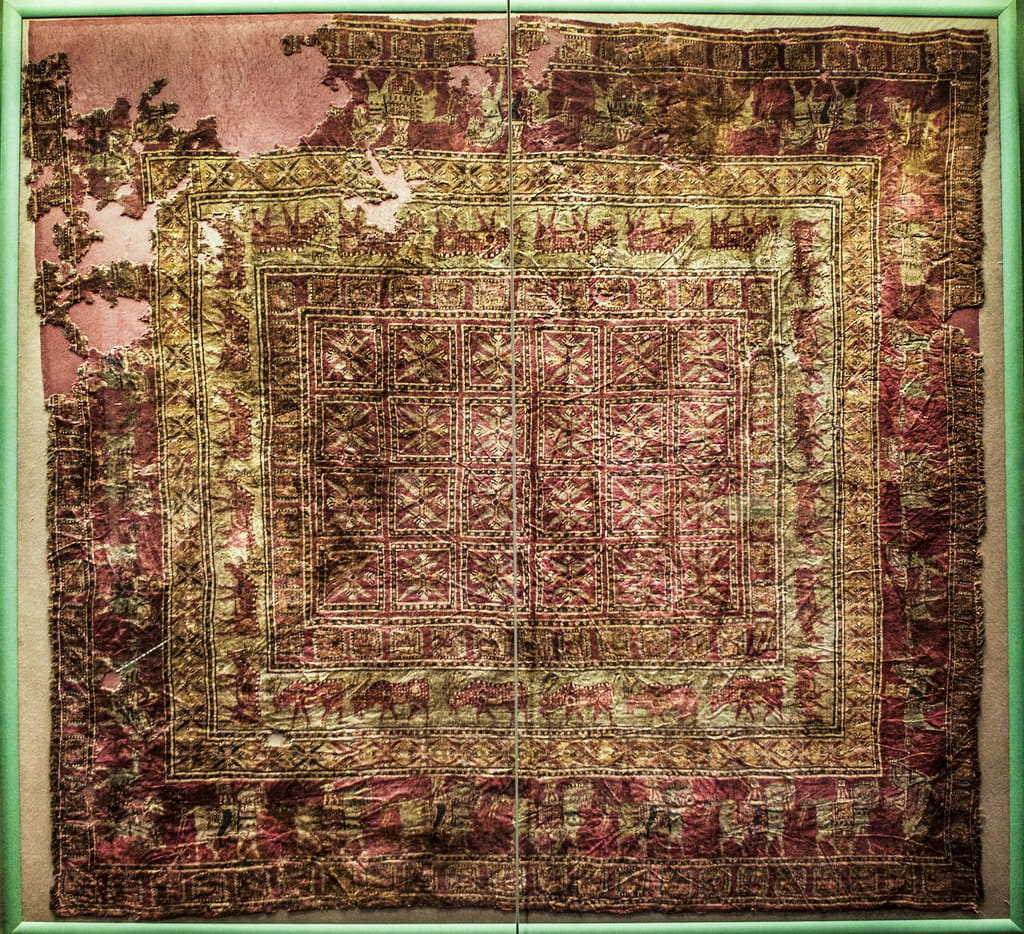
It’s easy to be awestruck when looking at this intricate piece of craftsmanship, and it stands as evidence that ancient weavers had an impressive eye for detail and expertise in their craft.
Hand-crafted pazyryk carpet from natural fibres like durable wool and animal hide, this captivatingly beautiful rug was perfectly preserved due to its location within a frozen tomb, currently found in the Hermitage museum, – allowing us a glimpse into an age long past. This is currently a cherished component of the collection of the Hermitage Museum.
Persian carpets are a timeless and universally appreciated form of art, renowned for their intricate designs, captivating colors, and meticulous craftsmanship. These remarkable pieces date back to ancient times; references as early as classical Greek and pre-Islamic documents confirm that they have been woven throughout history.
The development of Persian carpets is largely attributed to the Silk Road, a vast trade route that connected ancient civilizations across Eurasia (Europe and Asia).
This allowed the Chinese silk-weaving technique to be brought to Persia, where it ultimately evolved into the richly detailed carpets with which we are familiar today. This also allowed Chinese rugs with cultural motifs and designs to spread worldwide. These handcrafted works of art carry the fusion of Eastern and Western cultures that embodied the Silk Road’s exchanges for thousands of years.
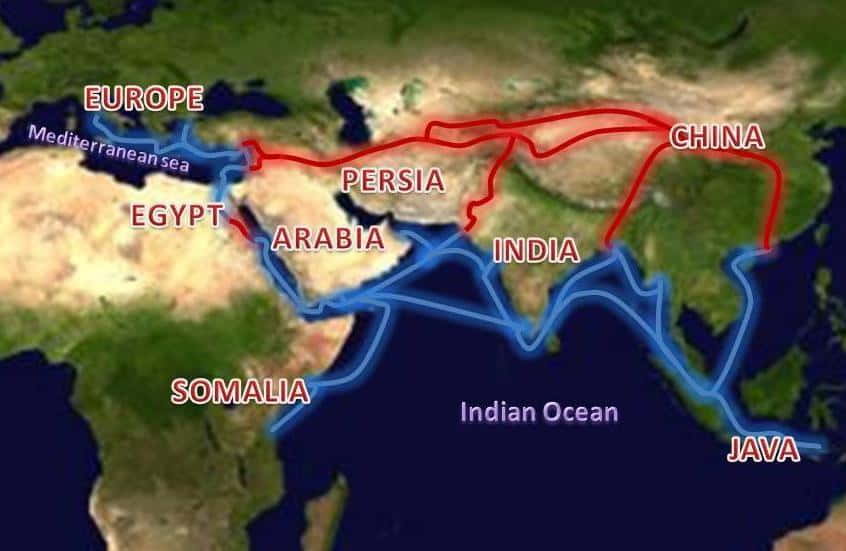
Furthermore, these exquisite pieces are crafted from top-quality silk and dyed wool materials, providing an added layer of luxury and splendor that has made them a symbol of sophistication throughout recorded history.
The spread of Persian carpet-making techniques across the world has been a testament to its enduring success and impressive beauty, making it a timeless work of art that continues to captivate admirers around the world.
This design is based on the formal gardens of ancient Persia, with their abundance of flora separated by pathways and ornamental ponds. They sometimes take the form of a palace garden seen from above, but more often a garden is simply implied by the presence of foliate forms.
In the classical Persian garden design, the field of the famous garden carpet design is divided equally by channels of water into four sections; named “Chahar bagh” (four gardens). Usually, the centre medallion has the form of a pool containing fish and ducks.
The water in the pool and channels is woven in pale blue and beige, and on the background of each square are woven birds and shrubs and a cluster of flowers. Some of these carpets are woven in the shape of a Mehrab (gateway to heaven), and in the others the background has been divided into six sections.
Famous garden carpet designs are most closely associated with the Kerman weavers of southern Persia and date back to the 17th and early 18th centuries during the Safavid dynasty. Iran is situated in a dry arid region, and in many regions, there is a seemingly endless expanse of desert or mountains. All the lovely designs which are seen in Persian carpets, such as streams, pools, and gardens with trees and birds, are an attempt to bring the lush beauty of nature into their lives.
The Herati design derives its name from the city of Herat (which was part of Persia until the last century but is now in Afghanistan). The design is generally composed of a single floral head within a diamond framework, flanked by four outwardly curling leaves.
One of these carpets is now in the Metropolitan Museum of Art in New York and the other is in a Museum in Vienna. “Herati” design rugs are closely associated with those from Khorassan, Kurdistan, Hamedan and Azerbaijan.
A carpet of this design typically depicts hunting, with human figures (usually on horseback) or predatory animals pursuing their prey amidst a fertile undergrowth of various plant life. Formal hunting scenes have their origins in the traditions of the Persian Shahs and other Royals, who loved to see themselves depicted as noble hunters and horsemen.
A small number of these carpets are connected to the Safavid period. These carpets were woven in Kashan. The finest of the remaining four larger carpets is kept in the museum in Osterreichisches, Vienna, Austria. It is extremely elegant, made entirely of silk and brocaded with silver and gold. The size is 6.80×3.20 m. and its knots number about 1,270,000 to each square metre.
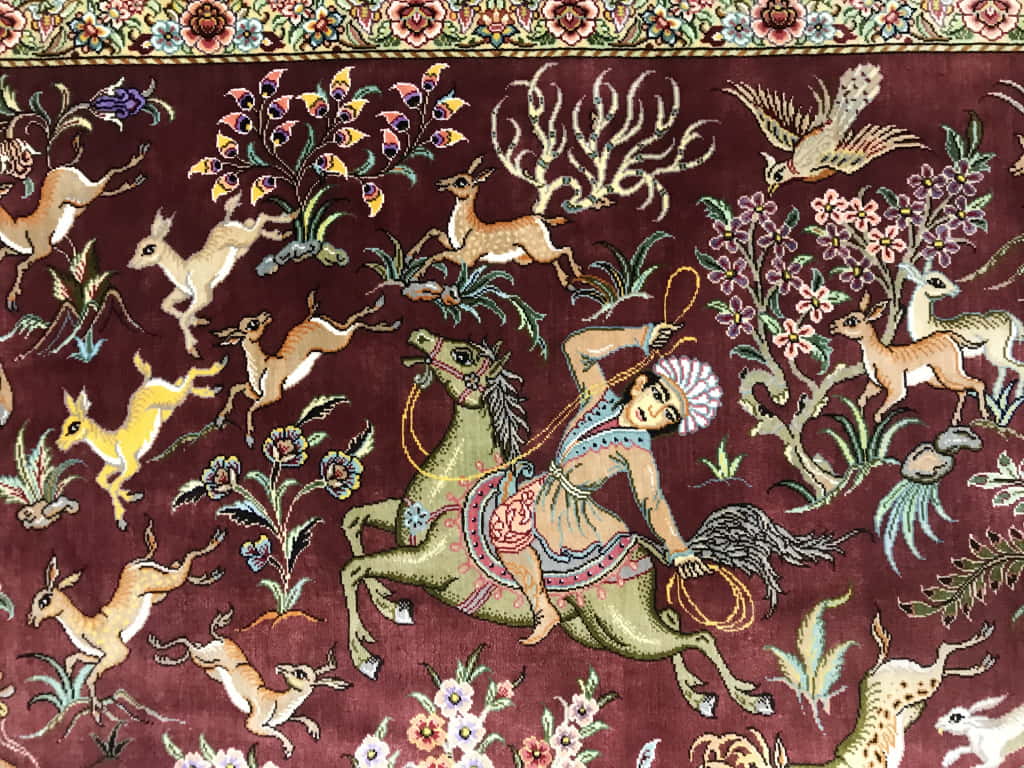
Experts believe that Sultan Mahammad, the skilled painter of Shah Tahmasb’s Court, who was a pupil of the celebrated Iranian painter Behzad, designed this incomparable piece. These designs depict animals, including lion, deer, and wild donkey, pasturing amongst trees and bushes, with huntsmen on horseback or foot, with bow and arrow.
In the 16th century, Iranian artists introduced a new design called “Tree and Shrub”, by combining the “medallion” pattern with shapes of animals and trees. The finest carpet of this design is found in the Metropolitan Museum of Art, in New York. The Medallion of this magnificent carpet is in the form of a pool of fish, which is surrounded by trees and branches of beautiful flowers.
Experts think that all carpets of this category, which were woven in the 16th, 17th and 18th centuries, originated in Kordestan and from parts of North-Western Iran. Lovely and exquisite samples of this design are also found in the Museum of Philadelphia.
The “Vase” pattern was probably created in the second half of the 16th century, corresponding with the reign of Shah Abbas. In this pattern, the field of the carpet is usually divided from side to side by rows of floral lozenges or some other geometrical frames, arranged in lattice forms.
Each design contains a vase or a bunch of flowers. In the same pattern, either a row of animals or hunters on horseback can be found. The group of “Vase” rugs is generally subdivided into Arabesque design, Serrated Leaf, Mehrab (arch), Golden (vase), repeated Panels, and multiple Medallions.
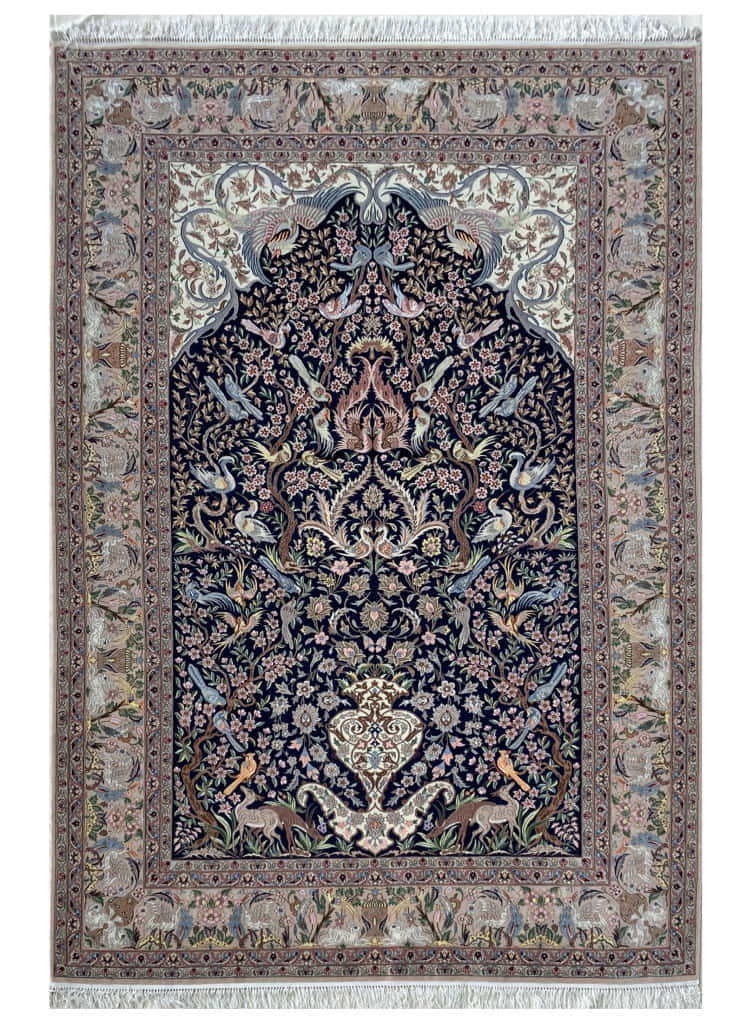
Unlike the Medallion carpets, this pattern has a design that is woven in one direction. Viewed from the opposite direction, the design appears inverted. Experts such as Kurt Erdmann and Charles Ellis believe that the design originated in Caucasia, but was perfected in Iran.
Arthur Pope believes that the pattern was created in Joshaghan (Central Iran). Several samples of the “vase” design rugs are now kept in museums in New York, Hamburg, Paris, Milan, Vienna, and Tehran.
Majid has a masterpiece vase design silk rug (super-fine with 2500 knots per sq/ inch) in his private collections, and its photo is displayed in Gallery- classical rugs section.
Palaces built in the 15th-16th century Safavid era have very large central gardens with rooms built around the private garden. Large arched or Mehrab windows look out onto the garden. The design of this piece is inspired by the viewpoint from a Mehrab window into a garden. It uses stylised flowers and birds on branches to represent eternal life in paradise. The vase of roses sitting on a window in this rug represents the transience of each human life, which, despite its beauties, will one day end.
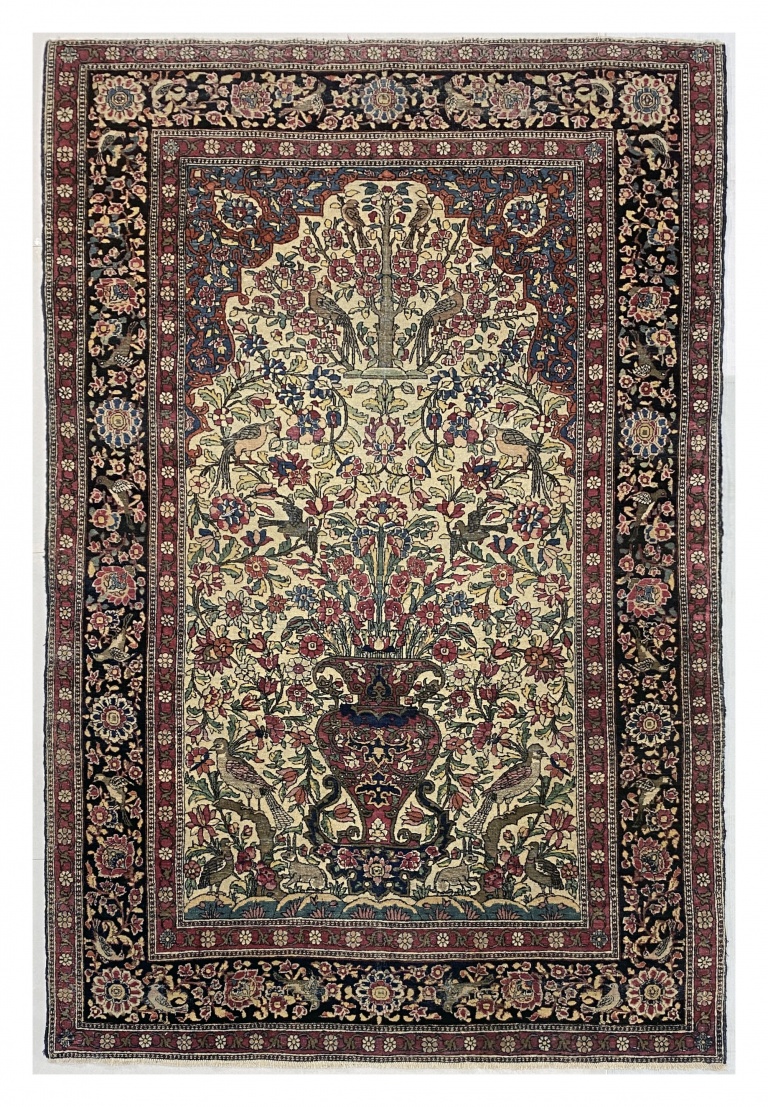
Persian oriental rugs have long been prized for their intricate designs and masterful craftsmanship. They have been used in royal courts and palaces for centuries, for them, carpets represent not only as a decorative element but also as a symbol of wealth and power. Persian carpets were often commissioned by rulers and nobility and were created by skilled designers and craftsmen using high-quality materials like durable wool and pure silk.
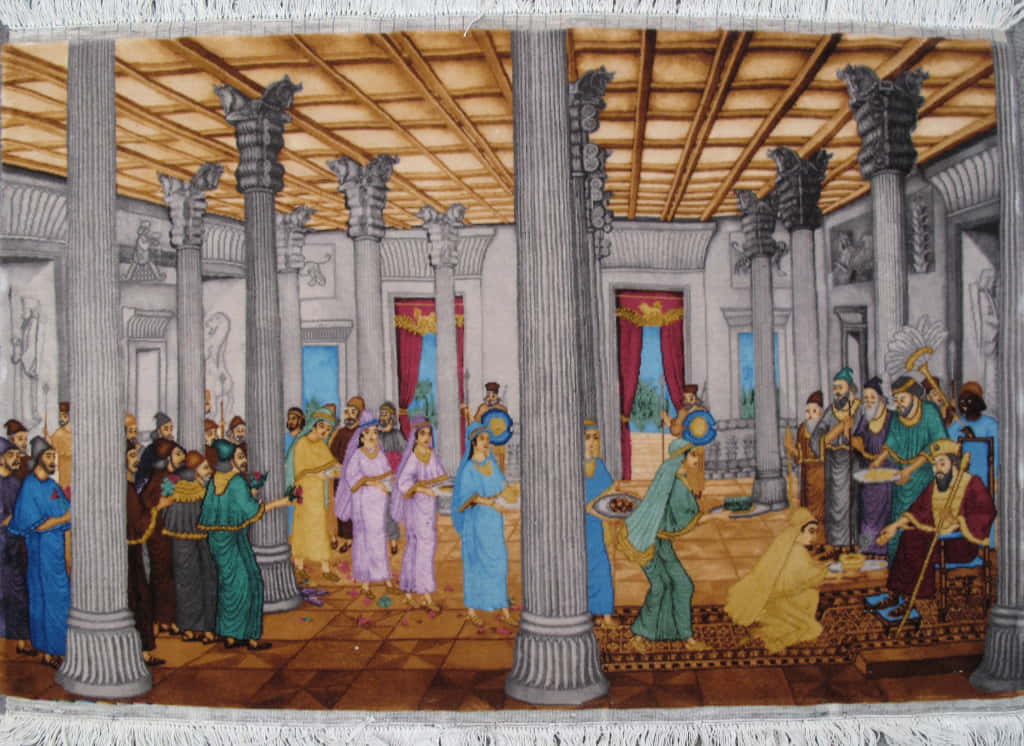
They were used to adorn throne rooms, reception halls, and other important spaces within the palace. The use of these area rugs in royal courts and palaces helped to establish Persian rug-making as a highly respected art form.
These empires are some of the richest examples of royal courts and palaces after the Persian empire.
The Ottoman court carpets were renowned for their intricate designs, which were highly stylized and often employed motifs found in other visual art forms in the 19th century. The primary two styles used were the ‘saz style’ and ‘floral style’, both of which showcased a unique taste and aesthetic sense.
The saz design was characterized by long, sinuous leaves, as well as stylized flowers, while the floral style featured more naturalistic depictions of flowers like tulips, roses, carnations, and hyacinths amongst others. While these two styles usually stood apart from each other, they were often combined with other motifs such as cintamani to form magnificent works of art that complemented the grandeur of courtly life.

The cintamani pattern itself was formed by pear-like circles accompanied by wavy lines – sometimes known as the “tiger stripes” – that could be seen on a vast array of objects from those created by royal workshops. These included not only carpets but also ceramics, book bindings, paintings and textiles; all crafted to perfection with techniques passed down through generations of master weavers who worked in service to their imperial masters.

Safavid court carpets are renowned for their intricate craftsmanship and lavish motifs. The Ardabil carpet, a masterpiece that still hangs in an Iranian mosque today, is an example of the precision and complexity of Safavid designs. Ardabil carpet is the oldest known knotted carpet and one of the largest, most exquisite, and historically significant Islamic carpets in the world. Its non-figural decorations include elaborate floral motifs, ornate calligraphy, and shamsas – sunbursts that are symbolic of the divine light of God.
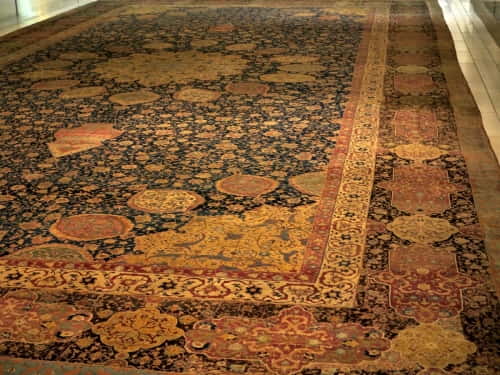
Carpets intended for secular settings were often more ornate and varied than those used in religious venues, featuring a range of motifs ranging from animals, hunting scenes, and human figures to angelic imagery. This is reflective of the importance placed on leisure pursuits such as hunting by Iran’s ruling classes during the Safavid era. In fact, hunting was a popular pastime even before Islam reached Persia in the 7th century CE.
Those who had the privilege to enjoy these masterworks would have encountered not only stunning visuals but also symbols imbued with profound spiritual significance – from the mystical shamsas to scenes depicting princely hunting which could be interpreted as metaphors for man’s quest for higher understanding or enlightenment. More than 1500 examples are found and preserved in private collections worldwide of such skilled designers and craftsmen.
The Mughal dynasty’s roots lie in the Mongol dynasties of Iran and Central Asia, and this is reflected in the unique weaving style that became associated with Mughal court carpets. This style was initially developed using Persian artisans, utilizing traditional and iconic motifs like all-over patterns of flowers and lattices. Most of these precious carpets were made using silk, with gold and silver threads.

Later, more naturalistic designs appeared, depicting plants and animals as part of the Mughal emperors’ interest in the natural world. These designs flourished during the reign of Shah Jahan who is renowned as the most famous benefactor of “Taj Mahal”, features similar floral decorations on its exterior and also can be seen on a variety of media from courtly paintings to carpets.
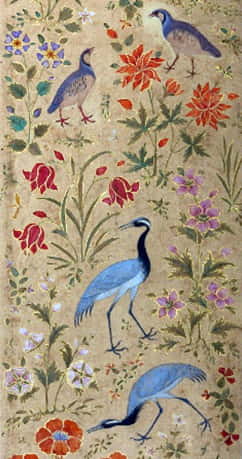
Mughal carpets are renowned for their quality; each piece is individually crafted using the finest materials available with some even taking up to one year to complete. Even centuries later, original Mughal carpets remain highly sought-after items amongst collectors due to both their beauty and historical significance – reflecting a time when artistry was integral to celebrating culture and identity.
In Persia, there have been notable dyeing centres that performed an integral role in the development and production of rugs. During the Islamic period, the Azarbaijan Province was distinguished as one of the largest epicentres of Persian carpet weaving in the region, and a great deal of weaving also took place in the Tabarestan Province as well.
Several different carpets were used during this era, some as traditional floor coverings and others as prayer mats. Prayer mats were small squares of fine carpets used by people during their daily prayers.
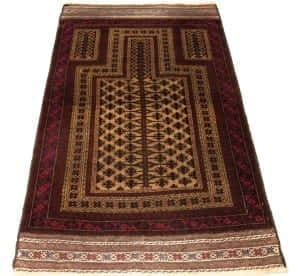
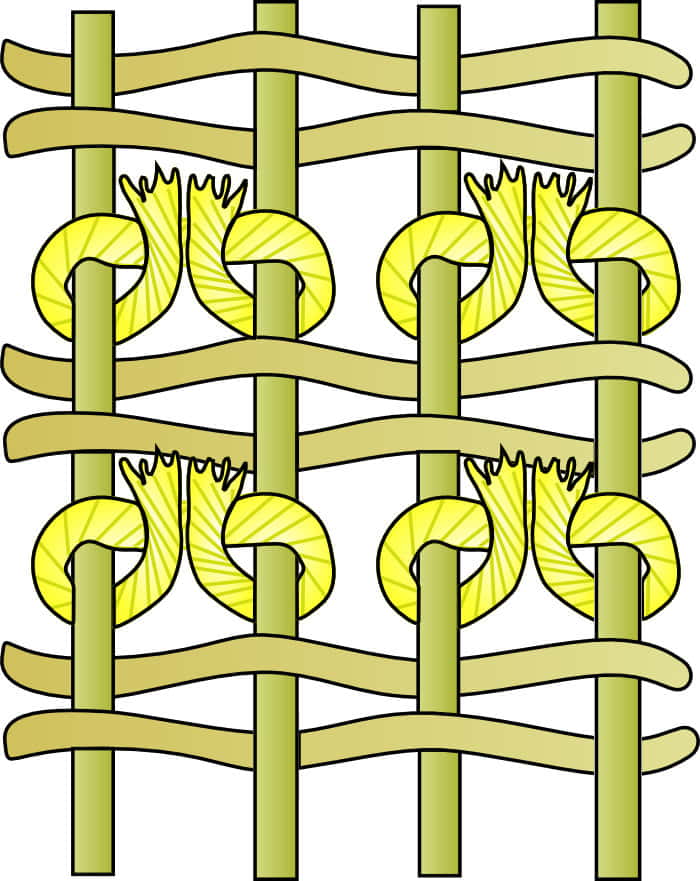
Following the reign of the Arab Caliphates, a Turkish tribe bearing the name of its progenitor, Seljok, invaded Persia. The history of Persian carpet weaving was greatly influenced by their rule (1038–1194). Turkish knots were used by the Seljuk ladies, who were skilled in carpet weaving.
The Seljuk ladies were known for their craftsmanship, particularly when it came to producing carpets. The Turkish knot is still in use in the regions of Azerbaijan and Hamadan, where Seljuk influence was greatest and long-lasting. The yarn is wrapped twice around two adjacent warp threads in the Turkish knot, and the ends are dragged out between these two threads. The Safavid Dynasty, which ruled in the 16th century AD, is when the Persian hand-knotted carpet peaked.
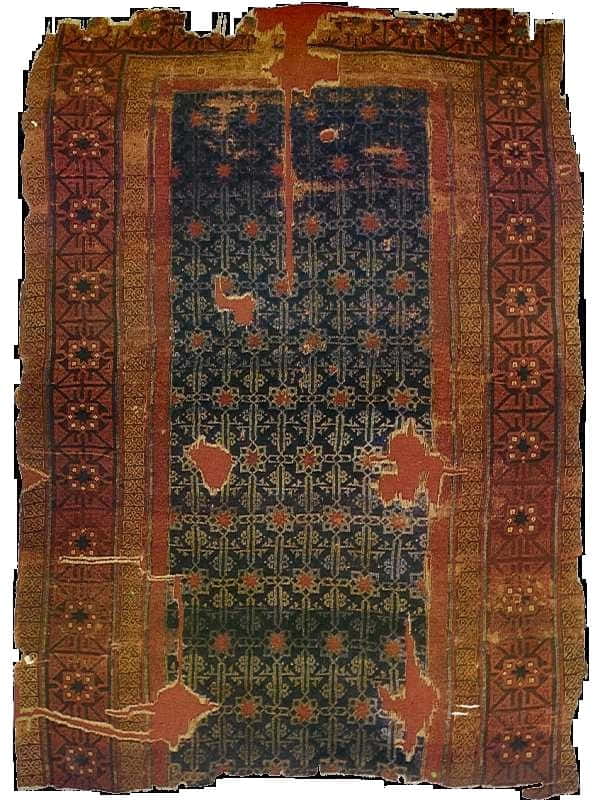
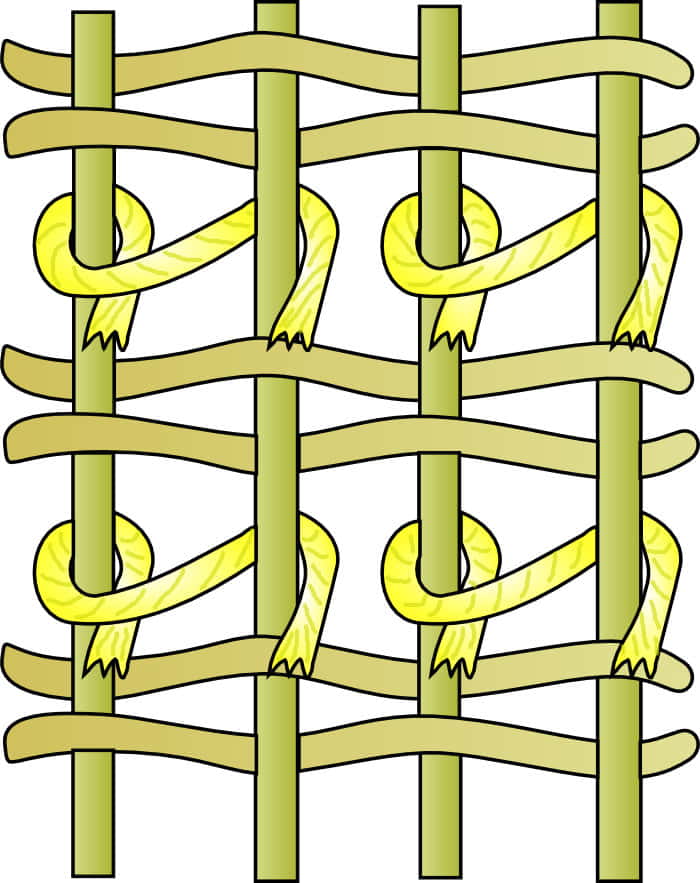
Persian rugs and carpets traditionally use symmetrical or asymmetrical knots, distinct from the other types of hand-knotted rugs in the world. The asymmetrical knots may be positioned either to the left or to the right after the warp thread has been woven.
The Persian knots also became very prominent in other regions as well. Turkey, Egypt, India, China, and Iran all use this type of knotting to produce their rugs. Other types of knots are also used around the world, but Persian rugs can be most often seen with this type of weaving.
Persian rugs have long been a symbol of luxury and refinement, yet the production of these exquisite pieces can be greatly impacted by cultural and political events. During times of war or political unrest, resources for production become scarce as artisans are unable to work due to safety concerns.
As a result, the output of Persian carpets is drastically reduced during these turbulent periods. Moreover, changes in cultural preferences can also affect the demand for certain styles and designs of Persian carpets.
For example, trade and craftsmanship regained their importance after the Afghan invasion in 1722. Only Persian nomads, as well as artisans in small towns, carried on the craft’s legacy of creating war rugs. Trade and craftsmanship were once again valued during the Qajar dynasty’s control in the latter part of the 19th century.
The production of carpets revived once more, with Tabriz merchants exporting carpets to Europe via Istanbul. Some European and American companies even established operations in Persia at the end of the 19th century and organised artisan manufacturing for western markets. Kashan Carpet weaving is currently Iran’s most popular handcraft.
Political decisions such as trade sanctions or tariffs can significantly alter the market for Persian carpets both domestically and internationally. These limitations on import or export could lead to a decrease in demand for certain types of Persian rugs, resulting in a subsequent change in their production levels.
Traditional Persian art of carpet-making techniques has seen a resurgence in popularity in recent years. These techniques include hand-knotting, hand-weaving, and the use of natural dyes.
Many contemporary rug makers are reviving these methods in order to create unique, high-quality pieces that are both beautiful and sustainable. Additionally, the use of traditional techniques can also help to preserve cultural heritage and support local artisans.
One example of traditional Persian carpet-making techniques being revived is the use of natural dyes. Natural dyes are made from plants, insects, and minerals, and have been used for centuries in carpet making. These dyes are not only more environmentally friendly than synthetic dyes, but they also produce more vibrant and long-lasting colors.
Another example is hand-knotting and hand-weaving, which are labor-intensive processes that result in a much higher-quality rug than machine-made alternatives. Hand-knotted carpets can take months or even years to complete, but the result is a rug that is much more durable and will last for generations.
A loom is a device used in the production of textiles, including Persian carpets. It is used to interweave threads or yarns to create a fabric or textile. In the case of Persian carpets, the loom is used to create the foundation of the rug on which the pile or nap is later added. There are different types of looms used in the art of carpet making, including vertical or upright looms and horizontal or flat looms.
The most commonly used loom in traditional Persian carpet-making is the vertical or upright loom. This type of loom consists of two upright beams, one fixed and one movable, between which the warp threads are stretched. The weaver sits in front of the loom, using a pedal to raise and lower the warp threads, and a shuttle to pass the weft thread across the warp. The weaver can create various patterns and designs by manipulating the warp threads that run along the rug’s length.
The horizontal or flat loom, on the other hand, is a more modern type of loom and is less commonly used in traditional Persian carpet making to make flat weaving carpets. This type of loom is similar to the vertical loom but is laid out horizontally and has a mechanism that moves the warp threads from side to side.
The modern Persian rug industry is a complex and dynamic field that has evolved over the centuries. Today, Persian carpets are produced not only in Iran, but also in other countries such as India, Pakistan, China, and Turkey. These countries have adopted the traditional Persian rug-making techniques and have added their own unique styles, designs and colors to the rugs.
In terms of the global market, Persian rugs have a strong reputation for their beauty and high quality, making them a popular choice for interior designers and homeowners around the world. The United States, Europe, and the Middle East are among the biggest markets for Persian rugs. By the end of the 19th century, certain European and American companies had even established operations in Persia and organised craft production destined for western markets.
Despite the global market, the Persian rug industry is facing some challenges. The industry is facing increasing competition from other countries, as well as from machine-made rugs. Many of these machine-made rugs are cheaper and low in quality but more readily available, which can make it difficult for traditional Persian rug makers to compete.
However, Hand-woven carpets and rugs are a staple to the Iranian economy, and to this day, there are millions of rugs produced annually that generate a significant amount of the country’s income. Carpets have served Persian nomads as a means of survival and to express what carpets represent socially, economically, and historically.
The history of Persian carpet weaving is a very long and rich cultural history and continues to be highly valued in contemporary society for their intricate designs, fine craftsmanship, and cultural significance. The art of rug-making in Iran dates back to ancient times, and the intricate patterns and motifs used in Persian rugs are steeped in symbolism and meaning.
In contemporary society, Persian rugs continue to be highly sought after and valued. They are used in a variety of settings, including homes, offices, and public spaces. They are also used for religious and ceremonial purposes, such as prayer rugs. Persian rugs are often considered a symbol of wealth and status, and owning one is considered a mark of taste and refinement.
However, it’s worth noting that the market of Persian rugs, like many handcrafted goods, is also prone to forgeries, and it’s important to purchase from a reputable source. Additionally, as the market has grown, concerns have been raised about the exploitation of rug weavers, particularly those in rural areas, and the environmental impact of the industry.
View our collection of on Flickr Or view our Carpet and rugs collection